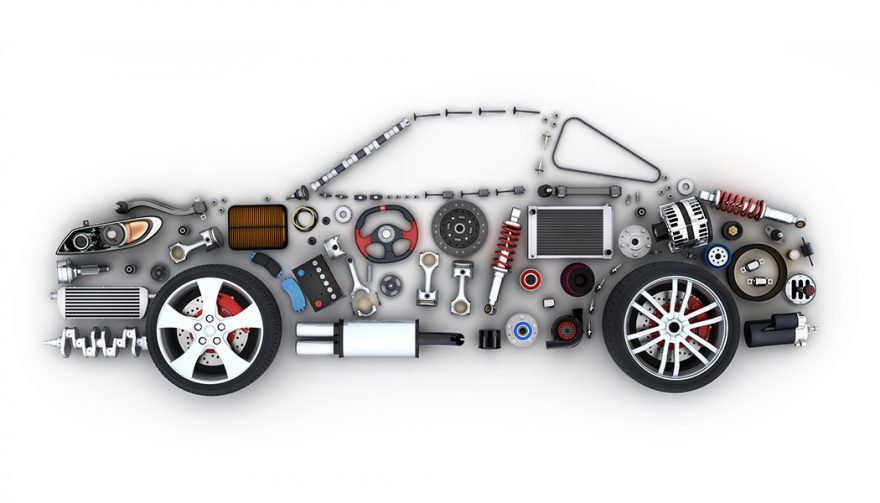
Price can be a big discrepancy between aftermarket and OEM car parts
Aftermarket vs OEM Car Parts: Do You Need to Spend More?
When it comes to the cost of maintaining or repairing a vehicle, the aftermarket vs OEM car parts debate has been the subject of debate for decades. As it should, it’s an issue that can involve a hefty chunk of change.
So here is the run down on the pros and cons for OEM and aftermarket car parts. Hopefully you’ll be able to make a more informed decision the next time you have to make a choice between the two.
Aftermarket vs OEM Car Parts
Original Equipment Manufacturer (OEM) parts are mostly made by the manufacturer, as the name suggests. We say mostly because some parts (Takata airbags come to mind) are subbed out to contractors. Generally speaking, when you use OEM parts you can expect them to fit and function just like the part it is replacing. If you get your car repaired at the dealer, you will be getting all OEM parts. Like anything else, there are pros and cons for OEM. So let’s do a quick rundown on them.
OEM Pros:
- OEM parts are designed and engineered with the whole model in mind.
- Each part meets detailed specifications engineered specifically for that part. Types of material, strength of material, environmental tolerances and other considerations are carefully engineered and tested.
- Part of the reason that performance and efficiency have increased dramatically over the past decade is the manufacturers’ newfound ability to create parts with incredibly tight tolerances. The technology and processes to accomplish this are rarely replicated in aftermarket parts.
- OEM parts almost always come with at least a one year warranty.
OEM Cons:
- All the engineering, designing, testing and advanced manufacturing costs are captured in the price of OEM prices. OEM parts cost more, sometimes a whole lot more.
- If you are driving an older car or a model that is discontinued, availability of OEM parts may be an issue. For example, if you are cruising in a 2001 Chrysler Sebring convertible and the pump that powers the top fails, you’re not going to get one from Chrysler at any price.
- If you like to modify your car, you may discover the part you want simply isn’t made by the manufacturer. That’s changing a bit with manufacturers watching the meteoric rise in “mods,” particularly with pickups. Dealers want to optimize their service bay operations and are also pressing the brands for “non-stock” parts.
The Aftermarket Story
An aftermarket part is any part for a vehicle that is not sourced from the car’s maker. If you have your vehicle serviced or repaired by an independent shop, that mechanic will probably use aftermarket parts. Is that a bad thing? Not necessarily.
In almost every case the aftermarket part will be less expensive than its OEM counterpart. There are a ton of aftermarket brands making the same part, and not all brands adhere to high quality standards. The key to successfully using aftermarket products is the competence and experience of the mechanic who is doing the work.
A pro will know what brands are comparable to OEM products. If you have confidence in the mechanic you can have confidence in the parts.
Somebody who doesn’t really care so much about the quality of aftermarket vs OEM car parts is your insurance company. They want inexpensive repairs. If you demand OEM parts they may charge you for the difference between the two.
Aftermarket Part Pros
- The big advantage is price. Sometimes as much as 60 percent. Independent shops, national chains and anyone else competing with a dealer’s service bay will use the cheaper aftermarket price for their quotes. That said, there are some high-quality brands whose prices are not significantly less expensive than OEM but generally offer better products.
- There are aftermarket products for almost every vehicle ever commercially sold, including classic cars, antiques and exotics. That Chrysler Sebring convertible top pump, there’s an aftermarket solution for that.
- A modifier’s dream. If you want oversized brakes, cold air intakes, a fording kit for a 4×4, custom mud flaps, custom nerf bars for your pickup or any other part the manufacturer doesn’t make, the aftermarket has it.
Aftermarket Parts Cons
- Quality among aftermarket parts can vary dramatically. Even small items like a spark plug can have dozens of manufacturers and performance and reliability will vary greatly. Stick with brands you know or get a recommendation from a trusted mechanic.
- Not all aftermarket products come with a warranty. The ones that do typically offer 30 days, compared to one year offered by OEM. One way some makers keep prices down is by using lesser-quality materials, meaning they aren’t going to hold up as well as OEM.
- Stay away from aftermarket body panels. Fit and finish cannot be guaranteed. There are too many stories of bumpers falling off, hoods that “shrink,” and early rust out of other body parts. Push back when your insurance company wants to use the cheapest part available.
So that’s the story about aftermarket vs OEM car parts. As with nearly any purchase you make, the more research you do about your options will help you make the decision that’s best for you and your vehicle.





